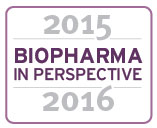Breakthrough Pace Shows No Signs Of Slowing
Executive Summary
FDA started off 2016 with a spate of new breakthrough therapy designations, feeding the popular program – and fueling agency concerns about workforce strain.
At least 11 new breakthrough therapy designations have been announced in the first seven weeks of 2016, as the expedited review program's popularity continues to rise at a fast pace.
The FDA Performance Tracker![]() identified just shy of 40 designations granted in 2015.
identified just shy of 40 designations granted in 2015.

The 2016 designations have gone to products and indications that are fairly well-advanced in the clinic (see chart below). Sponsors expect to submit applications for approval of two of the most recently designated breakthrough products, Novartis AG's midostaurin and Genentech Inc.'s Ocrevus (ocrelizumab), in the first half of 2016.
Breakthrough status gives an application an "all hands on deck" review at FDA, a resource-intensive commitment of staff across the review process. The popularity of the program, which is not funded by user fees, is straining FDA employees and resources, Office of New Drugs Director John Jenkins warned at the most recent FDA/CMS Summit (Also see "FDA's Stellar Review Performance Is Straining Workforce" - Pink Sheet, 14 Dec, 2015.).
The agency has already approved one breakthrough-designated novel agent in 2016, Merck & Co. Inc.'s Zepatier (grazoprevir/elbasvir), and is reviewing applications for six more novel products with breakthrough therapy designations (Also see "Return Of The Me-Too? Big Pharma's 2016 Approval Prospects Stick To Familiar Categories" - Pink Sheet, 15 Feb, 2016.).
Though the program is generally working to improve the development and review processes – resulting in an extremely high rate of first-cycle reviews and fast review times – it is not a guarantee of success. The agency recently refused to file Catalyst Pharmaceutical Partners Inc.'s NDA for the orphan drug candidate Firdapse (amifampridine phosphate) (Also see "Catalyst Stumbles With Filing Of Controversial 'Breakthrough Therapy' Firdapse" - Pink Sheet, 17 Feb, 2016.).
With late-stage products filling the breakthrough pipeline, FDA reviewers can expect the workload in 2016 only to get heavier. Sponsors of at least eight other breakthrough-designated products have indicated an intention to submit an application for approval in 2016 (see the Breakthrough Therapy Designation Chart![]() on the FDA Performance Tracker for detailed information).
on the FDA Performance Tracker for detailed information).
Two have already started: Eli Lilly & Co. initiated a rolling BLA for olaratumab, a monoclonal antibody that binds to platelet-derived growth factor receptor (PDGFRa), in late 2015 for soft tissue sarcoma, and Scioderm Inc. (now Amicus Therapeutics Inc.) began a rolling NDA for topical Zorblisa (SD-101) in the fourth quarter for treatment of the rare connective tissue disorder inherited epidermolysis bullosa. User fee goal dates will be triggered by the completion of the filings.
In addition to midostaurin, Novartis aims to submit bimagrumab for sporadic inclusion body myositis in 2016. Clovis Oncology Inc. hopes to submit its second novel breakthrough agent, the PARP1 and 2 inhibitor rucaparib for advanced BRCA-mutated ovarian cancer, and Neurocrine Biosciences Inc. aims to submit valbenazine (NBI-98854), a vesicular monoamine transporter 2 inhibitor, for treatment of tardive dyskinesia. In the second half of the year, Spark Therapeutics Inc. hopes to have a BLA filed for its gene therapy SPK-RPE65 for RPE-mediated inherited retinal dystrophies.
Stagnant Disease Segments
The most recent breakthrough designation announcements highlight the long-time lack of therapies in the designated indication.
Ocrevus' breakthrough therapy designation for treatment of primary progressive multiple sclerosis (PPMS) marks the first time the designation has been awarded to a multiple sclerosis therapy, Genentech noted in its Feb. 16 announcement. No therapies are approved to treat PPMS, although a wide range of options are available for the more common relapsing form of the disease.
Genentech plans to submit a BLA for ocrelizumab in both PPMS and relapsing MS in the first half of the year with data from three Phase III trials: the OPERA I and II studies in relapsing MS and ORATORIO in PPMS.
The ORATORIO data is also the foundation of the breakthrough therapy designation. Data from the 732-patient PPMS trial showed that ocrelizumab reduced the risk of progression of clinical disability for at least 12 weeks by 24% compared to placebo .
Novartis has stressed the lack of progress in acute myeloid leukemia, where the company says treatment strategy has "essentially remained unchanged" for almost three decades, in its communications about midostaurin (PKC412), a multi-kinase inhibitor that had some stumbles in Phase II before entering the Phase III RATIFY trial in newly diagnosed, FLT3-mutated AML patients. Novartis is working with Invivoscribe Technologies Inc. on an FLT3 companion diagnostic.
RATIFY, which Novartis conducted with the Alliance for Clinical Trials in Oncology, is the largest study in FLT3 AML to date, according to the company, with 717 participants selected from 3,279 patients screened. RATIFY data enabled the breakthrough designation, showing a 23% improvement in median overall survival for patients treated with midostaurin plus standard induction and consolidation therapy compared to standard therapy alone (Also see "Novartis' Midostaurin To Fill 30-Year Void In AML Treatment" - Pink Sheet, 7 Dec, 2015.).
|
Recent Breakthrough Therapy Designations |
||||
|
Sponsor |
Product |
Indication |
Supporting Data |
Status |
|
Vtesse |
VTS-270, a formulation of (2-hydroxypropyl)-beta-cyclodextrin |
Rare disease - Niemann-Pick Type C1 disease |
Phase I trial, conducted by National Institutes of Health, in which post hoc analyses showed preliminary evidence of overall disease stabilization and improvement in several disease domains compared to a natural history study patient cohort. |
Clinical - Phase IIb/III trial underway |
|
Rhythm |
Setmelanotide (RM-493), a melanocortin-4 receptor (MC4R) agonist |
Rare disease - Pro-opiomelanocortin (POMC) deficiency obesity |
Not disclosed. |
Clinical - Phase II trial enrolling |
|
AbbVie and Genentech (Roche) |
Venetoclax, an inhibitor of the B-cell lymphoma-2 (BCL-2) protein |
Cancer - In combination with Rituxan (rituximab) for treatment of relapsed/refractory chronic lymphocytic leukemia |
Results from the M13-365 study |
Clinical - Combination of venetoclax and rituximab for relapsed/refractory CLL is being further evaluated in the ongoing MURANO (GO28667) study |
|
AstraZeneca |
Lynparza (olaparib), an oral poly ADP-ribose polymerase (PARP) inhibitor |
Cancer - Monotherapy treatment of BRCA1/2 or ATM gene mutated metastatic castration resistant prostate cancer (mCRPC) in patients who have received a prior taxane-based chemotherapy and at least one newer hormonal agent (abiraterone or enzalutamide) |
Results of the TOPARP-A Phase II trial, which found that olaparib monotherapy in mCPRPC may offer substantial improvement over available therapies |
Clinical |
|
AbbVie and Genentech (Roche) |
Venetoclax, an inhibitor of the B-cell lymphoma-2 (BCL-2) protein |
Cancer - In combination with hypomethylating agents for patients with treatment-naïve acute myeloid leukemia (AML) who are ineligible to receive standard induction therapy |
Data from untreated patients, 65 years or older with AML and reported in one investigational study |
Clinical |
|
Allergan |
Rapastinel (GLYX-13), intravenous formulation of a novel NMDA receptor partial agonist |
Psychiatric - Adjunctive treatment of major depressive disorder (MDD) |
Phase II evidence demonstrating a rapid onset of efficacy (within 1 day) in MDD patients who had an inadequate response to one or more antidepressants |
Clinical - Phase III trials expected to begin in 2016 |
|
Immunomedics |
Sacituzumab govitecan (IMMU-132), an antibody-drug conjugate |
Cancer - Treatment of patients with triple-negative breast cancer (TNBC) who have failed at least 2 prior therapies for metastatic disease |
Phase II study in patients with metastatic TNBC who had received a median of 5 prior therapies |
Clinical - FDA Special Protocol Assessment in place for an international, randomized, controlled trial |
|
Adaptimmune Therapeutics |
NY-ESO, an affinity-enhanced T-cell targeting therapy |
Cancer - HLA-A*201, HLA-A*205 or HLA-A*206 allele-positive patients with inoperable or metastatic synovial sarcoma who have received prior chemotherapy and whose tumor expresses the NY-ESO-1 tumor antigen |
Data from a Phase I/II trial in patients with unresectable, metastatic or recurrent synovial sarcoma who have received prior chemotherapy. In the primary efficacy analysis, 60% of the 10 patients receiving the target dose of cells responded, and there was a 50% overall response rate in the 12 patients receiving any dose of cells. |
Clinical - Pivotal trials expected to begin by end of 2016. |
|
Genentech (Roche) |
Ocrevus (ocrelizumab), a humanized monoclonal antibody designed to selectively target CD20-positive B cells |
Neurodegenerative - Treatment of primary progressive multiple sclerosis (PPMS) |
Results from Phase III ORATORIO study that showed ocrelizumab significantly reduced disability progression and other markers of disease activity compared with placebo. |
Clinical - BLA submissions in PPMS and relapsing multiple sclerosis planned for first half 2016 |
|
AstraZeneca |
Durvalumab (MEDI4736), a PD-L1 inhibitor |
Cancer - Treatment of patients with PD-L1 positive inoperable or metastatic urothelial bladder cancer whose tumor has progressed during or after one standard platinum-based regimen |
Data from a Phase I trial (Study 1108) |
Clinical |
|
Novartis |
Midostaurin (PKC412), an oral, multi-targeted kinase inhibitor |
Cancer - Adults with newly diagnosed, FLT3-mutated acute myeloid leukemia (AML) who are eligible for standard induction and consolidation chemotherapy |
Results from the Phase III RATIFY (CALGB 10603) trial, in which patients who received midostaurin and standard induction and consolidation chemotherapy had a significant 23% improvement in overall survival compared to standard therapy alone; median OS in the midostaurin group was 74.7 months vs. 25.6 months in the control arm. |
Clinical - Global regulatory submissions to begin in first half 2016 |
